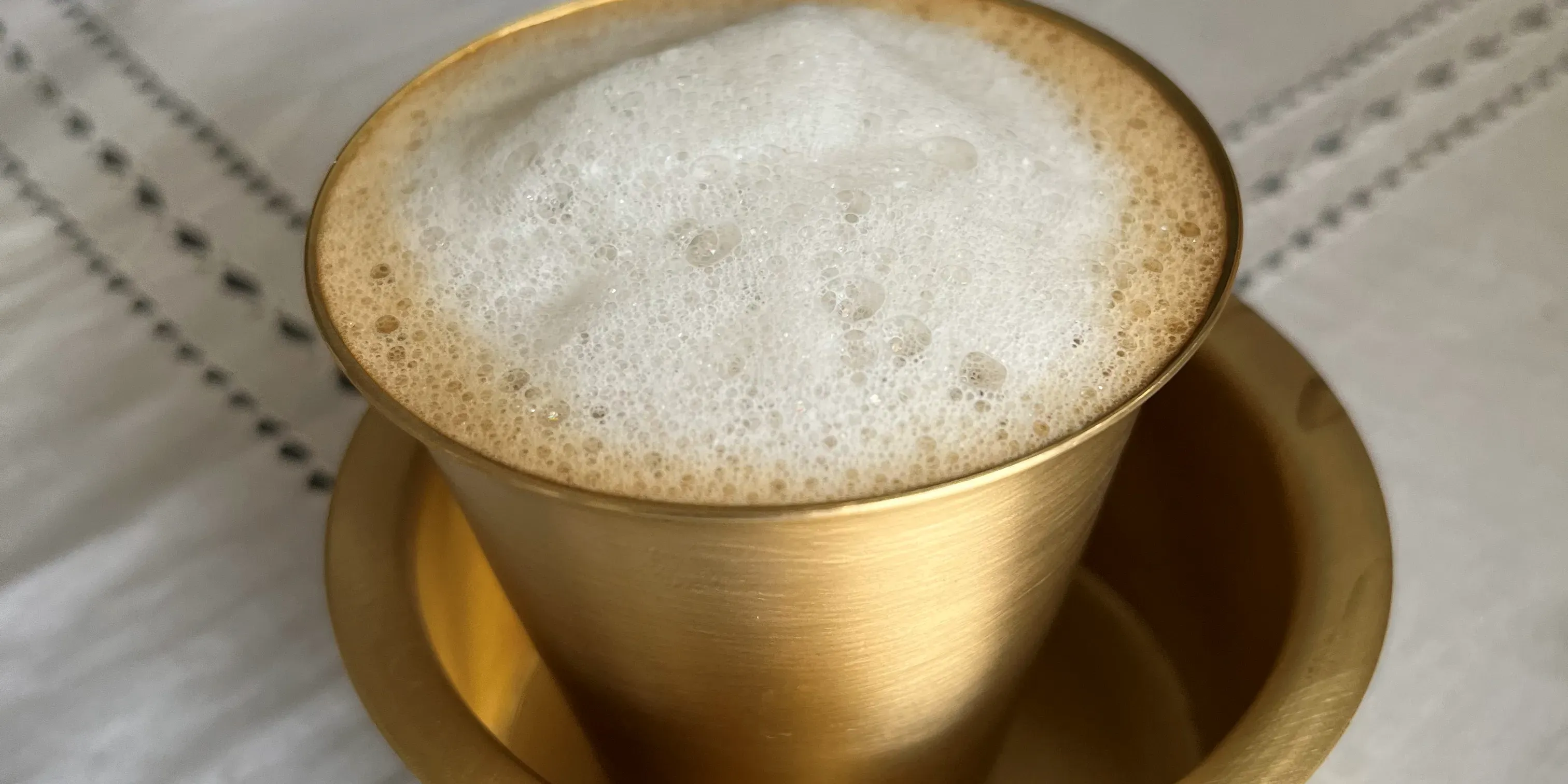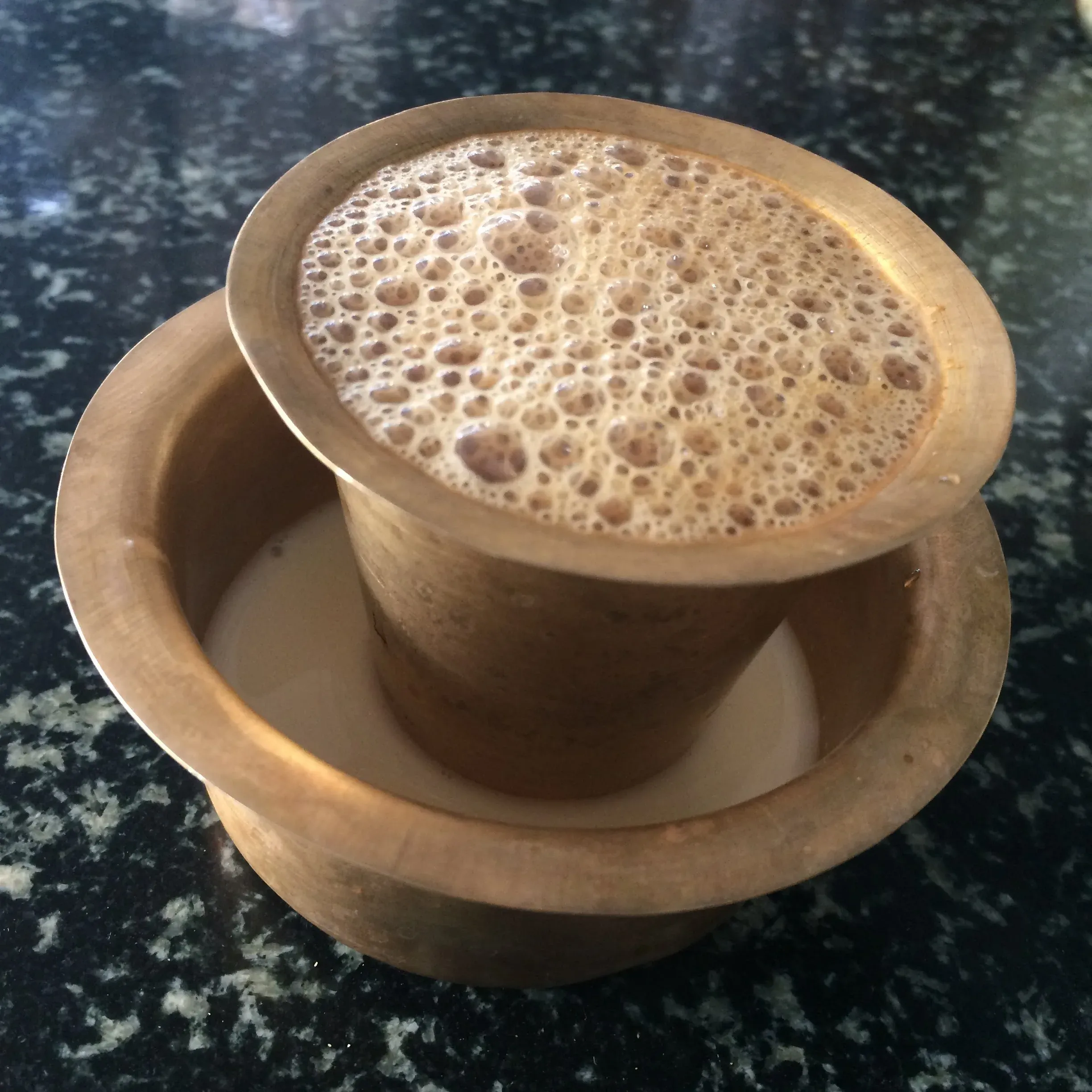
My addiction to coffee is an old one. My mornings don’t start on weekdays without coffee, and I’m not quite human until I’ve had my morning coffee. In India, coffee is very different from the West. I recently learned that the Indian Coffee Board is headquartered in Bangalore. The main coffee-producing regions of India (hills of Coorg, Nilgiris, and Wayanad) are not very far from Bangalore.
I got this coffee this morning on the way to the office. Here’s a good link to follow. For more information on how it’s prepared, you can check out some quotes from Wikipedia.
South Indian coffee is brewed with a metal device that resembles two cylindrical cups, one of which has a pierced bottom that nests into the top of the “tumbler” cup, leaving ample room underneath to receive the brewed coffee. The upper cup has two removable parts: a pierced pressing disc with a central stem handle, and a covering lid. The upper cup is loaded with freshly ground coffee mixed with chicory (~2 tablespoons of mixture per serving). The grounds are gently compressed with the stemmed disc into a uniform layer across the cup’s pierced bottom. With the press disc left in place, the upper cup is nested into the top of the tumbler, and boiling water is poured inside. The lid is placed on top, and the device is left to slowly drip the brewed coffee into the bottom. The chicory holds on to the hot water a little longer, letting the water extract more flavor from the coffee powder. This makes the decoction a lot stronger compared to typical western drip coffee. The decoction is so strong that you’d need only 2-3 teaspoons of it to flavor a 150ml cup of milk. Whereas, western drip coffee is quite watery to taste.
COFFEE.SYS Not Found: User startup disabled. ~Author Unknown

Read Next
Shravanabelagola
One of the largest monolithic statues in the world.
